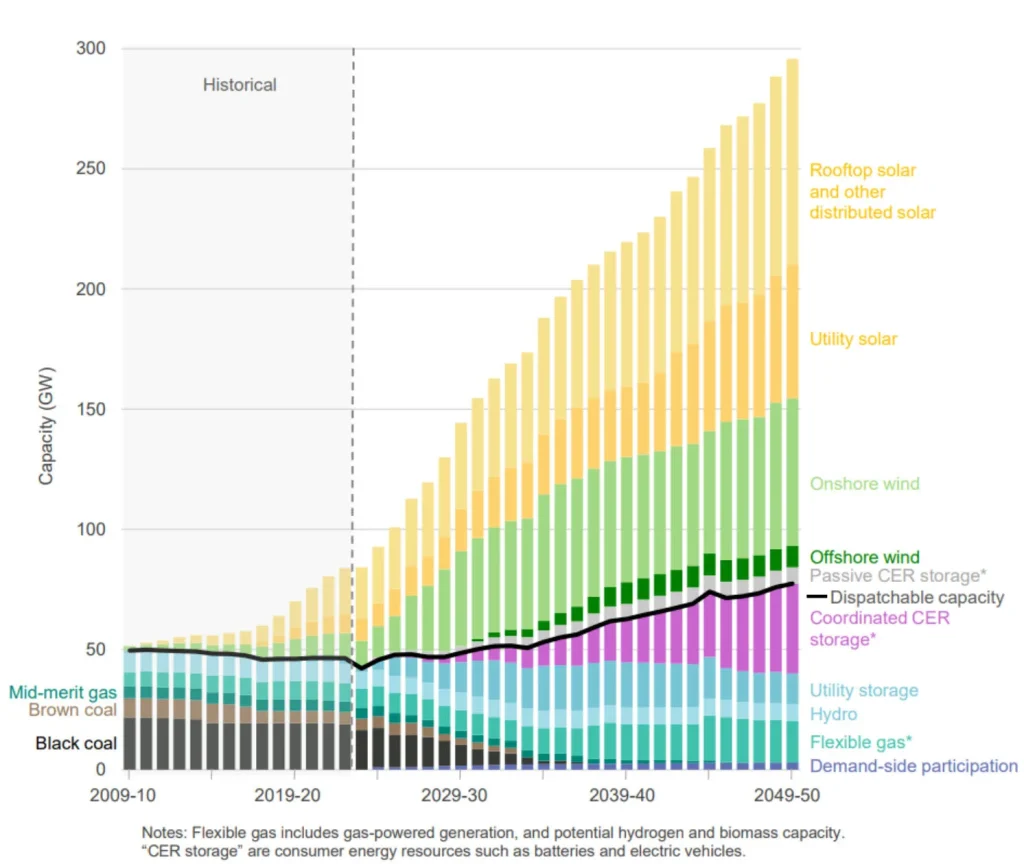Consumer Energy Resources treated as free in ISP
The ISP relies heavily on rooftop solar and home batteries, known as Consumer Energy Resources (CER), to provide generation and storage in coming decades, but does not include these assets as a cost.
Rooftop solar makes up the majority of solar capacity in the grid for the ISP’s forward projections (Figure 3). Likewise, coordinated CER storage (i.e. home and EV batteries connected to Virtual Power Plants [VPPs] that control their charge and discharge to the grid) makes up the lion’s share of storage from the mid-2040s onwards (Figure 3). Yet despite the forecast preponderance of CER, AEMO has “not included costs for household or residential batteries and solar PV because those are decisions that households and businesses make on their own” – the solar panels and batteries paid for by consumers are instead taken as an “input”.[37]
This crucial assumption is glossed over in the ISP’s executive summary, which states that the benefits of the Optimal Development Path include avoiding “$17 billion in additional costs to consumers”, without any mention that the annualised capital cost of all generation, storage, firming and transmission infrastructure, estimated at $121 billion,[38] does not include the cost of CER.[39]
Figure 3. NEM capacity projections in GW in Draft 2024 ISP Step Change scenario from 2009-10 to 2049-50.
These excluded costs are significant, with the total cost of rooftop solar and consumer batteries up to 2050 totalling around $360 billion at today’s prices using GenCost’s estimates.[41] This is much higher than the $130 billion cost of large-scale solar and batteries up to 2050 (which the ISP does include).[42]
- Forums
- Political Debate
- Six fundamental flaws underpinning the energy transition - Independent Report
Consumer Energy Resources treated as free in ISPThe ISP relies...
- There are more pages in this discussion • 1 more message in this thread...
You’re viewing a single post only. To view the entire thread just sign in or Join Now (FREE)










